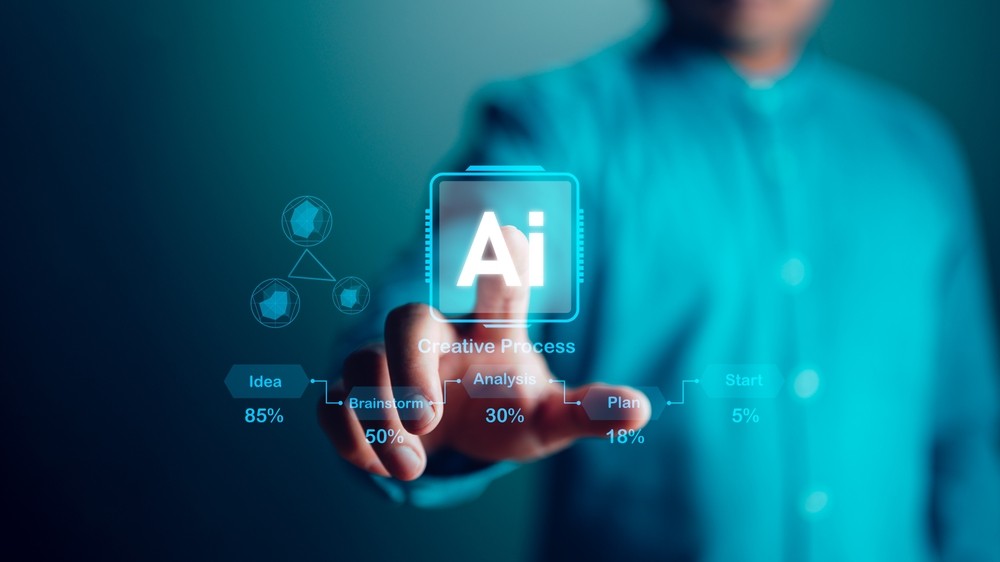Generative AI is being integrated into almost every aspect of our lives. So, it’s no surprise that organisations are exploring how to best leverage it to support product development, particularly for highly technical and complex designs that can eat away at time, money, and productivity. In the UK, it’s predicted that generative AI could save up to 7.9 billion employee hours, but how can engineers use it to their advantage to accelerate innovation?
Integrating generative AI into other tools, like simulation, is one potential solution. By enhancing existing capabilities, generative AI takes simulation a step further to improve both design processes, and engineers’ workflows. With this in mind, let’s explore how simulation is already supporting product development, and how AI can evolve its existing benefits.
Simulation’s impact on product design
Simulation allows engineers to create virtual models of physical systems and test their behaviour under real-world conditions. As a standalone solution, it already offers a host of benefits; whether in aerospace, automotive, electronics, or shipbuilding, simulation helps to identify design flaws before physical prototypes are built. This not only speeds up the development process, and supports a sustainable design process, but also helps to minimise costs and material waste.
One of the biggest benefits of simulation is that it allows engineers to understand a product’s behaviour different scenarios without the need for time-consuming physical testing. For example, when designing semiconductor chips, the thermal and mechanical stresses can be simulated to ensure that the components will function reliably in different environments. In the case of vehicles or aircraft, simulation can be used to optimise aerodynamics without the need for expensive wind tunnel testing.
Bringing generative AI into the fold
Evidently, simulation can be incredibly useful for engineers. Yet, product development processes traditionally require manual modelling and numerous simulation tests, which can be both time-consuming and technically demanding. By integrating generative AI with simulation, this process is significantly accelerated and optimised.
When an AI model is trained on specific data, it is able to produce robust predictions and simulations in a very short time that would previously have taken days, or even weeks. Moreover, engineers can quickly adjust parameters and get immediate feedback through real-time simulations, improving the entire design process. This not only improves efficiencies, but also speeds up decision-making. Even routine tasks can be automated, allowing engineers to focus on developing innovative solutions.
Aside from this, generative AI simulations free up time for creative work and accelerate overall product development, even for non-technical team members. User-friendly interfaces and automated workflows allow non-experts to participate in the design process. This promotes team collaboration, and increases accessibility and knowledge sharing within an organisation.
The best of both worlds
The combination of simulation and generative AI opens up a wide range of exciting possibilities across industries. While these aforementioned examples illustrate the use of simulation as a standalone tool, it is now possible to showcase how generative AI can be integrated in to further optimise the development process:
· Semiconductor chip design: In the semiconductor industry, chips are becoming smaller and more powerful, placing high demands on thermal and electrical reliability. To support chip innovation, generative AI can be used to predict the various parameters based on simulation results.
· Structural components in aerospace applications: Weight is a critical factor in aircraft design. Components such as jet engine mounts or brackets must be both light and strong to support the overall aircraft. Whilst simulations are used to test the mechanical strength under different conditions, generative AI learns from previous projects and independently proposes new, optimised designs. With this integrated approach, every design – even a failed one – is a valuable source of knowledge.
· Aerodynamics in automotive: The aerodynamic efficiency of a vehicle plays a key role in reducing fuel consumption and emissions; this is becoming increasingly important as carmarkers face increasingly strict emission targets. While wind tunnel testing has traditionally been one of the best ways to evaluate aerodynamics, generative AI simulations can now run through a large number of design variants much more quickly and cost-effectively.
· Optimising ship hull design: Flow-optimised hull shapes are also crucial in shipbuilding to save fuel and increase energy efficiency. Simulations help to test different hull designs under different flow conditions, while generative AI makes it possible to quickly propose new shapes and predict their resistance. The result is a ship design that can be operated more efficiently and sustainably.
Underpinning the future of innovation
Bringing generative AI and simulation together marks a turning point in how complex products are developed, validated against external standards, and brought to market. Innovations can be designed in a more efficient, sustainable, and cost-effective manner. Engineers, on the other hand, can benefit from collaboration with other employees and enhanced workflows. By embracing this two-pronged approach, organisations can revolutionise the design process as we know it, and ultimately open the door to an exciting new era of innovation.





